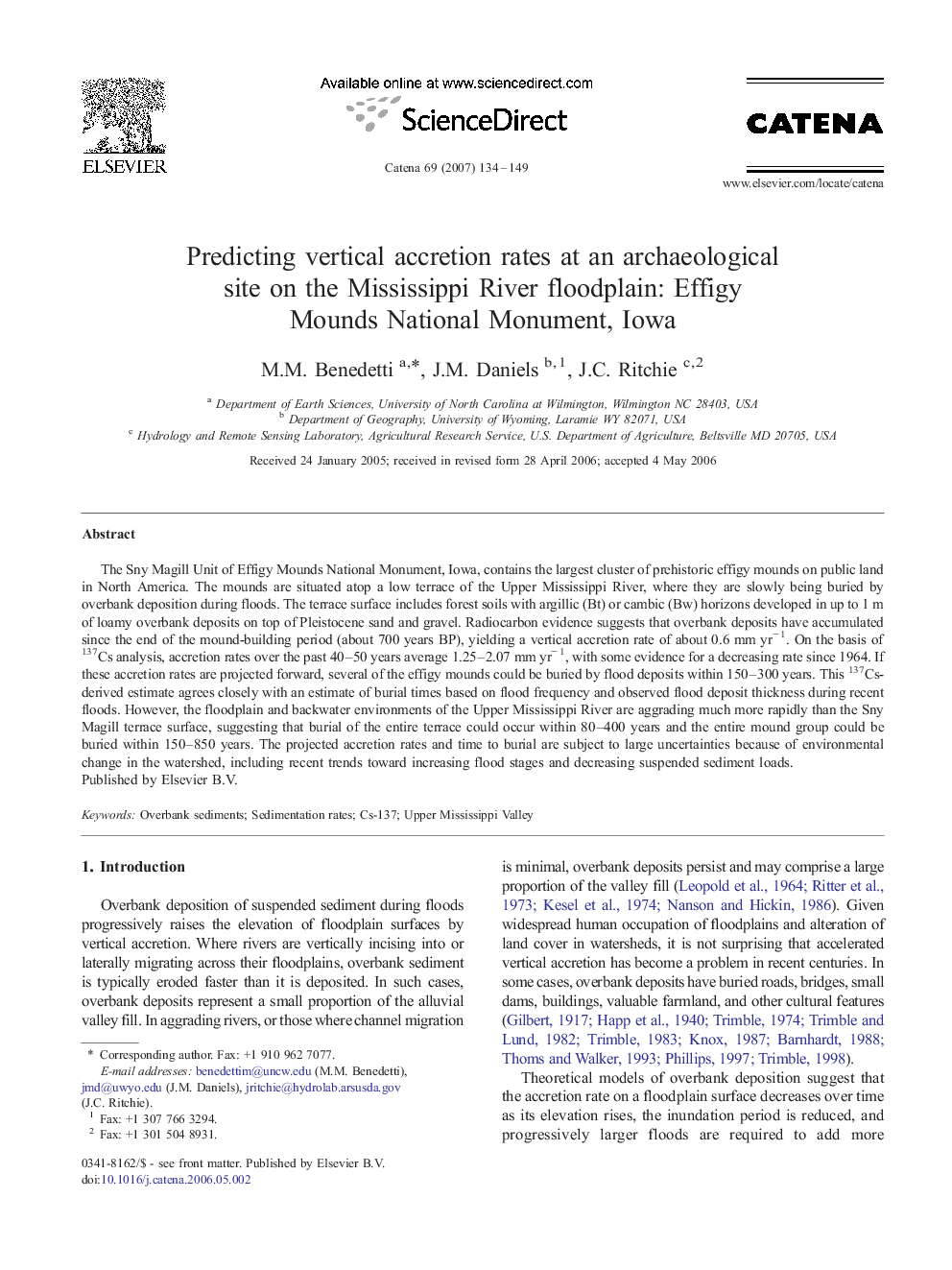| Article ID | Journal | Published Year | Pages | File Type |
|---|---|---|---|---|
| 4572679 | CATENA | 2007 | 16 Pages |
The Sny Magill Unit of Effigy Mounds National Monument, Iowa, contains the largest cluster of prehistoric effigy mounds on public land in North America. The mounds are situated atop a low terrace of the Upper Mississippi River, where they are slowly being buried by overbank deposition during floods. The terrace surface includes forest soils with argillic (Bt) or cambic (Bw) horizons developed in up to 1 m of loamy overbank deposits on top of Pleistocene sand and gravel. Radiocarbon evidence suggests that overbank deposits have accumulated since the end of the mound-building period (about 700 years BP), yielding a vertical accretion rate of about 0.6 mm yr− 1. On the basis of 137Cs analysis, accretion rates over the past 40–50 years average 1.25–2.07 mm yr− 1, with some evidence for a decreasing rate since 1964. If these accretion rates are projected forward, several of the effigy mounds could be buried by flood deposits within 150–300 years. This 137Cs-derived estimate agrees closely with an estimate of burial times based on flood frequency and observed flood deposit thickness during recent floods. However, the floodplain and backwater environments of the Upper Mississippi River are aggrading much more rapidly than the Sny Magill terrace surface, suggesting that burial of the entire terrace could occur within 80–400 years and the entire mound group could be buried within 150–850 years. The projected accretion rates and time to burial are subject to large uncertainties because of environmental change in the watershed, including recent trends toward increasing flood stages and decreasing suspended sediment loads.
